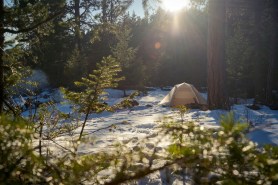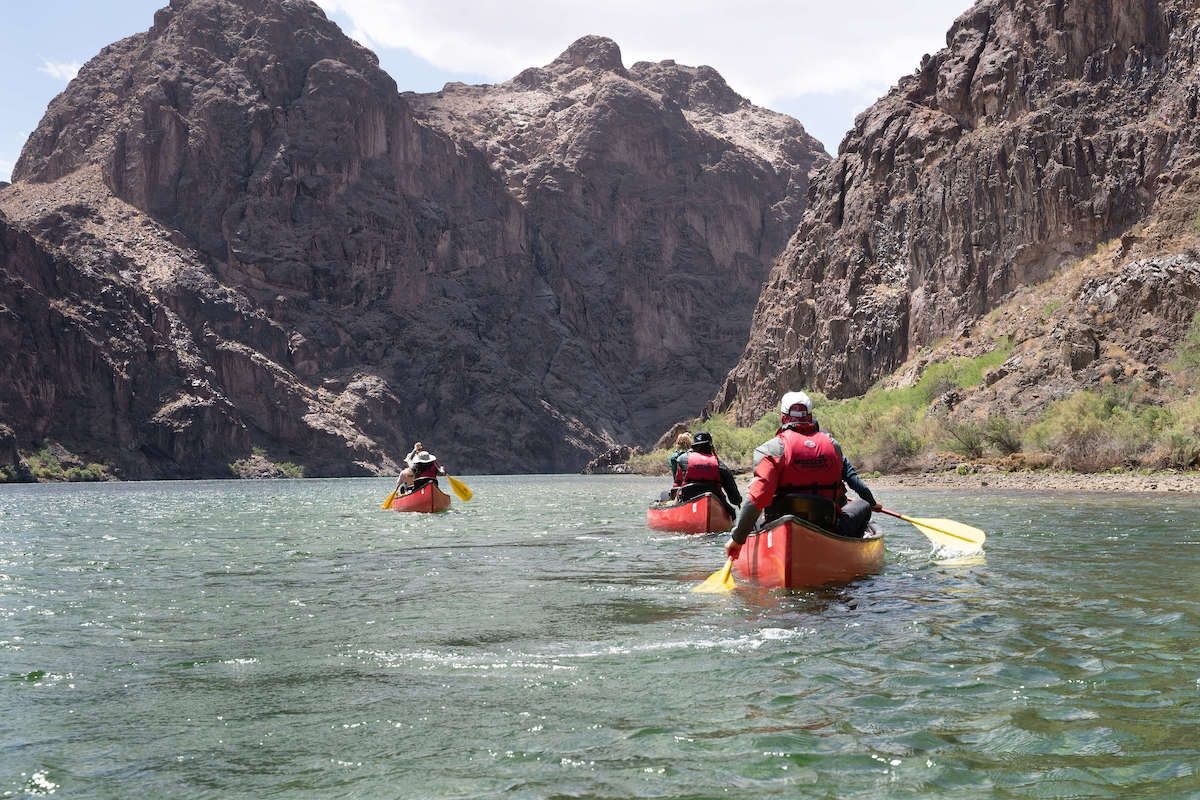

Golf courses have been the go-to setting for business leaders to network and strike deals for generations. The business benefits of meeting outdoors, such as improved mood, communication, creativity, and trust, aren’t limited to golf. In fact, nature’s boardroom is vast. From canoeing and hiking to ice climbing, business leaders and their teams are discovering there are so many ways to do business outdoors (and there are also many benefits of doing so).
Videos by Outdoors with Bear Grylls
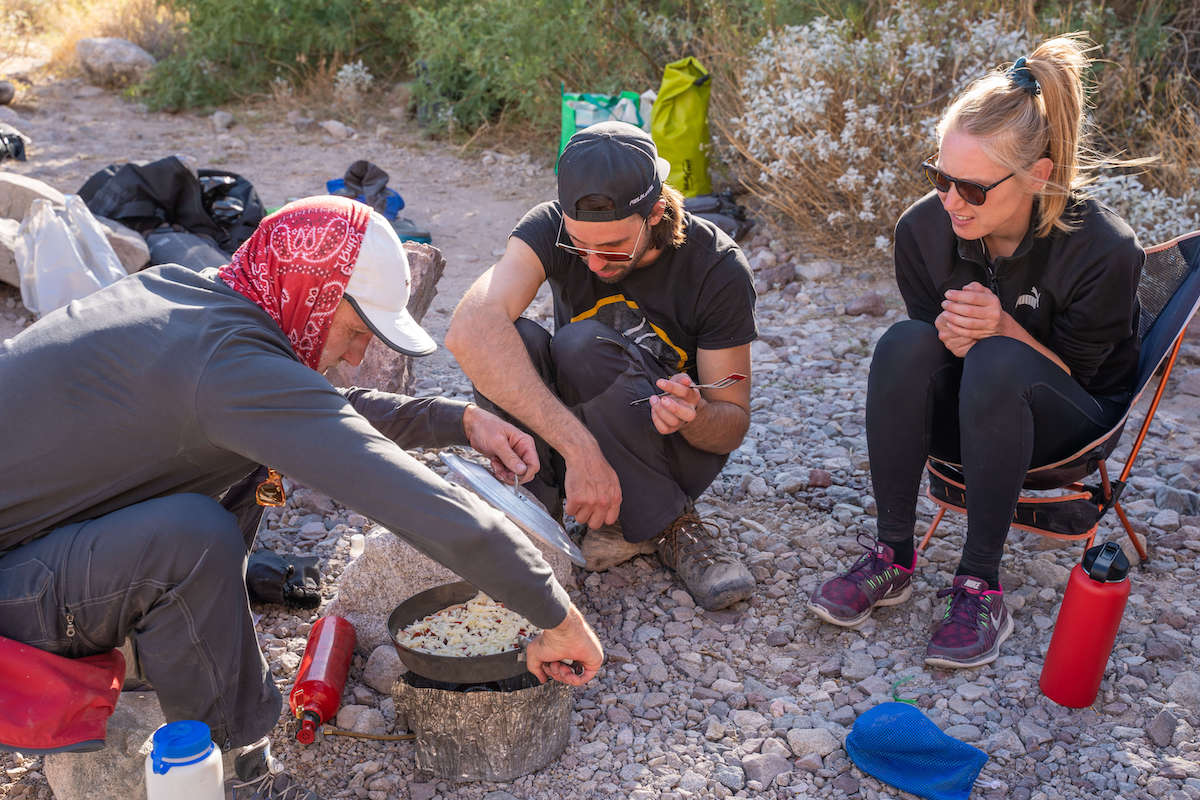
Nature as a Business Ally
Bart Foster of BusinessOutside is working to bring humanity back to the workplace, with nature serving as a silent partner.
“We say business outside is not just outside. It’s outside your comfort zone. It’s outside of written norms. It’s outside in nature. Our motion creates emotion,” Foster explains. “When we’re outside moving, walking shoulder to shoulder without direct eye contact, we become more authentic and more vulnerable. We establish genuine connections and build trust with one another.”
This approach leads to happier, healthier, and more productive business interactions, sparking creativity and focus.
“There’s science around it that cognitive function goes up,” he says. “You’re more focused, and when you bring the outdoors into the business world, we have more ideas.”
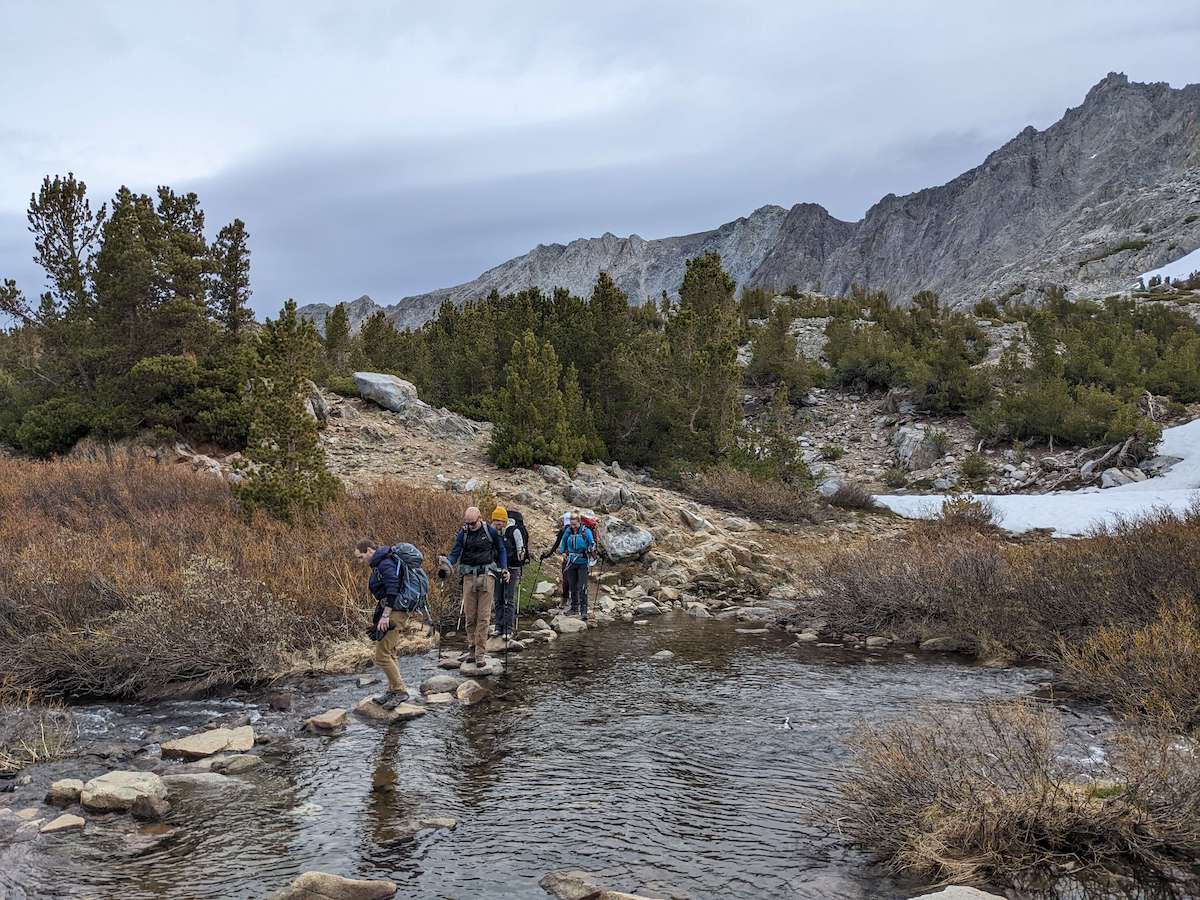
Nature’s Impact on Creativity and Problem Solving
Supporting this idea, environmental psychology research by Roger S. Ulrich shows that being in natural environments can lead to an increase in alpha brain waves, which are linked to relaxation and a boost in creativity. Psychologists from the University of Utah and the University of Kansas found that backpackers scored 50% better on a creativity test after spending four days in nature, disconnected from electronic devices.
These and other studies suggest that outdoor activities aid in building communication and trust and significantly enhance our creative thinking and problem-solving abilities.
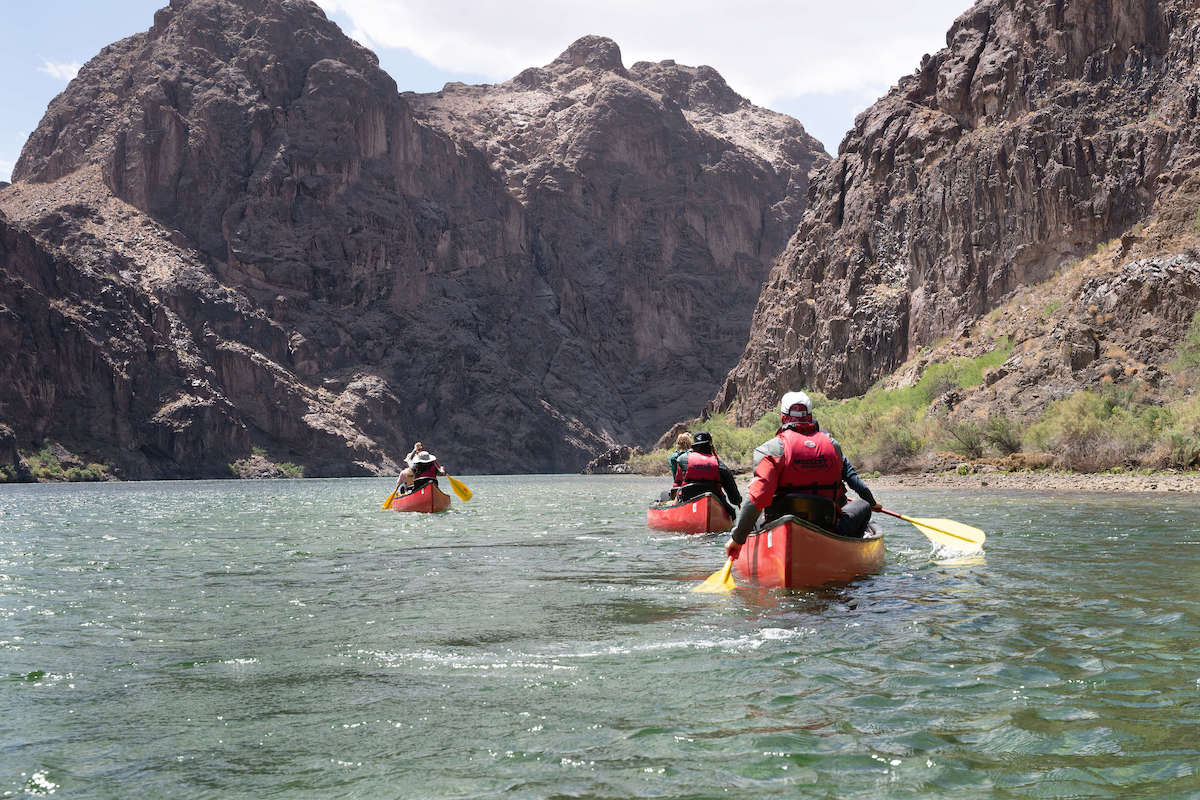
Innovating Leadership Through Outdoor Experiences
Knight Campbell of Cairn Leadership Strategies incorporates outdoor adventure into leadership training. He discusses how outdoor challenges can impact team dynamics and leadership skills.
“When we take executives canoeing,” he explains. “No one says, ‘I’m in front, paddling on the right and will tell you when I switch. Your job in the back is to steer the canoe.’ Instead, they all paddle on the same side and spin in circles down the river. It’s frustrating and emotionally charged. With a good facilitator to point it out, because they’re emotionally engaged with it, they will remember the lesson forever. Now, whenever they’re not communicating effectively, they’ll think, ‘Wait a second, this is like when we were spinning in that canoe. We need to make sure we’re on the same page.'”
Campbell calls this “emotional tagging” and contrasts it to being in a classroom.
“You can say, ‘you need to communicate and get on the same page, or it would be like going down a river in a canoe and spinning,’ and they won’t get it the same way,” he says.
Foster says business meetings, keynotes, presentations, and workshops are evolving into more dynamic outdoor experiences. He discusses what he calls “Action Walks” or “Connection Hikes,” where he takes business discussions outdoors.
“After being on stage for 20 minutes with Kellogg Company, we took 20 people and facilitated discussions during a walk through downtown Dallas, proving that meaningful business interactions can happen anywhere,” says Foster. “Although it’s nice to be in nature, you can do it in an urban setting. You just need to have an intentional conversation, get outside, and move.”
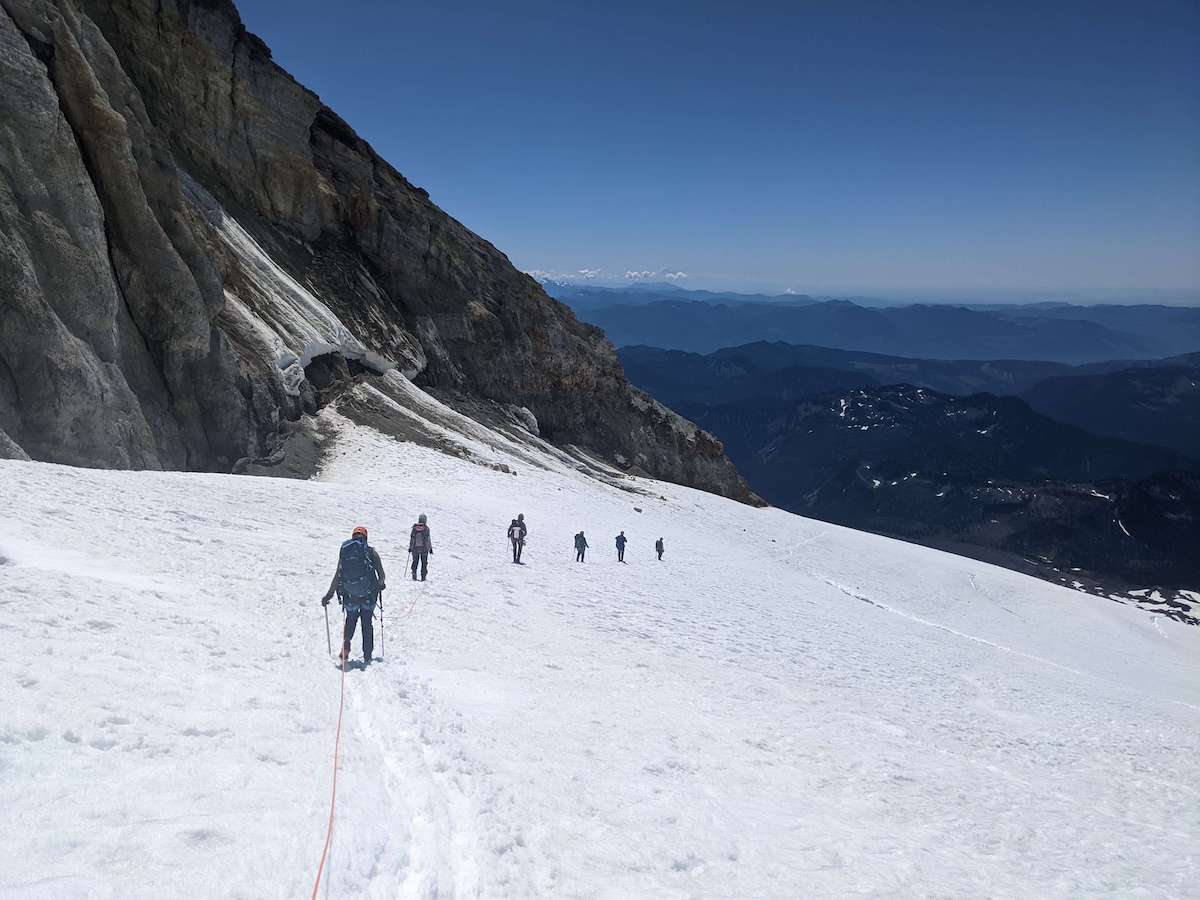
The Future of Business: Embracing the Outdoors
Campbell has noticed an increased interest in outdoor business activities.
“Millennials and other people are tired of watching PowerPoints in conference rooms and talking about what animal you would be if you were an animal. Post-COVID, many moved to Bozeman and Colorado to enjoy the outdoors. I think as they take on more leadership positions, they’ll want to get outside more,” Campbell says. “As they see companies like us leveraging the outdoors in an intentional, science-backed way, they’ll recognize they can go rock climbing and become more cohesive as a team, build psychological safety and trust, and communicate better.”
Foster adds, “Post-COVID, people crave meaningful connections and experiences. There’s a trend toward being more intentional with gatherings, moving away from traditional settings to ones that foster real conversations, often facilitated by the natural environment.”
Foster also notes the historical context, reminding us that we have been outside for most of human history, and a return to nature aligns with our inherent human needs.
“We manufacture all these comforts. We go from our car to our air-conditioned office to our sleeping bag, and we have all these nice comforts,” he says. “But nobody was looking for that, and sometimes we have to ask how can we do it differently. That’s the big stuff. There are different ways you can do this.”
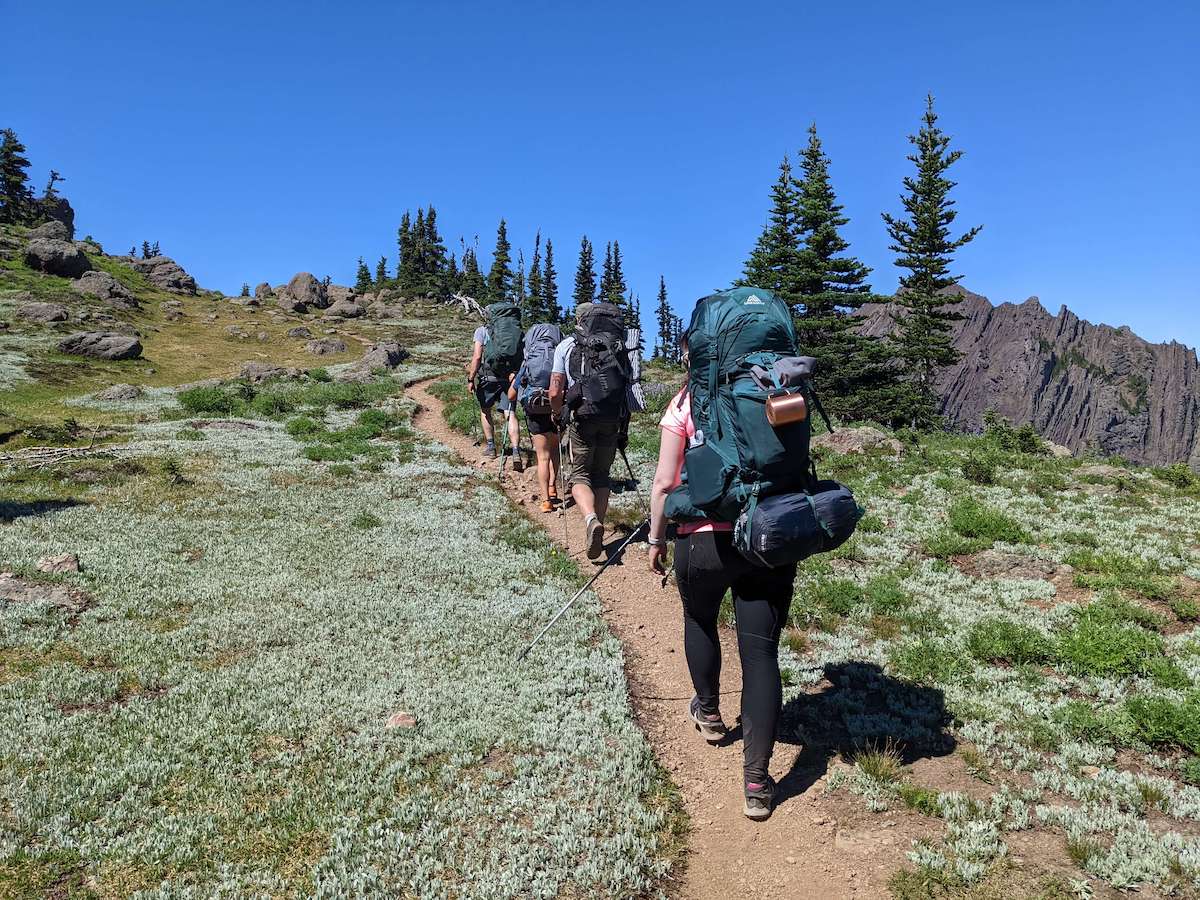
Taking Your Business Into Nature
“Why in the world would you not have a strategy meeting walking in a park or sitting at a picnic table where your strategic team will be 50% more creative?” Campbell asks. “A business leadership team I know mountain bikes together. They don’t necessarily say they’ll ride and try to solve a problem while doing it. They separate mountain biking for fun and then go back to the office and talk about strategies.”
“When you think about a phone or Zoom call or a one-on-one meeting in your office,” Foster says. “Try changing it and say, hey, let’s go for a walk or let’s meet at the park. I’ve had so many great discussions like that. It catches others a little off guard at first, but I’ve found they actually love it. They say it’s such a great idea. Why not do that more?”
Research shows that nature is good for humans. It challenges us to rethink traditional business settings and methods. With the potential for more authentic connections, better communication, more trust, and greater creativity, how will you take your business outdoors this year?




